I took these pictures while unpacking my Type 102E set on March 6, 2005. I paid special attention to packing methods and markings, so that information wouldn’t be lost. These pictures are presented in roughly chronological order as I unpacked each item.
The first box I choose has a document tied to it with a piece of twine.
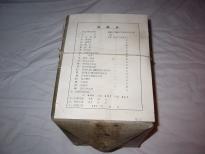
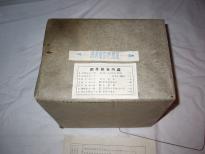
Removal of the outer wrapping reveals another paper wrapping, covered with a heavy layer of wax.
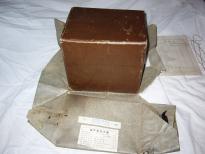

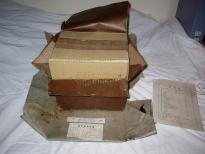
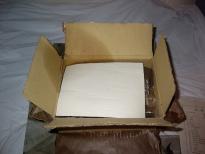
The box contains a cloth bag in a heat-sealed vinyl pouch, and a metal can wrapped in tissue paper. The box is oil-stained around the can, which contains white grease.
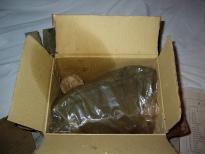
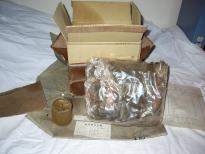
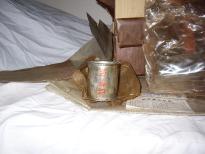
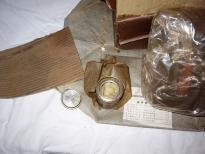
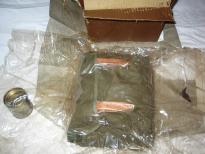
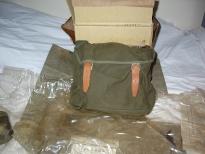
The cloth bag contains the cable that connects the handcrank generator to the transmitter, another cloth bag, and the generator crank handles.
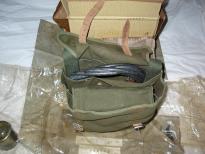
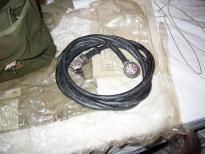
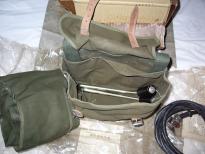
The other bag contains some straps, a cloth dessicant pouch, and a small cardboard box containing spare parts.
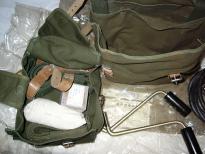
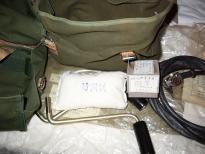
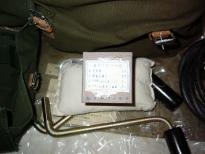
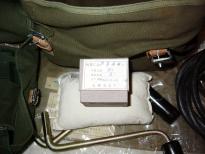
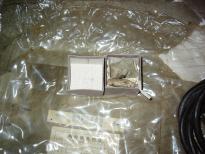
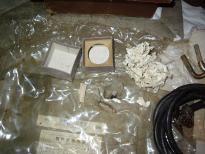
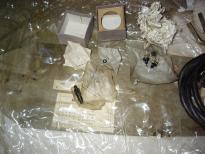
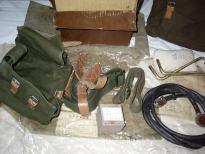
The next box is wrapped in the same manner. There’s a number between two layers of the inner waxed wrapping.
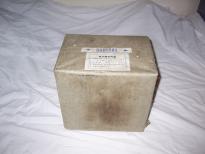
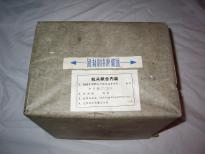
The first item exposed in this box is a paper envelope containing two manuals.
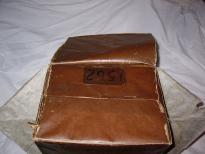

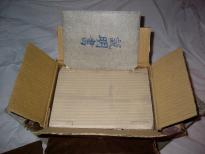
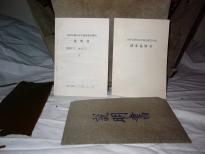
Further digging reveals a couple of cloth dessicant pouches, and the handcrank generator in a heat-sealed vinyl pouch. The vinyl has hardened and torn in one area. Inside the vinyl pouch, the generator is wrapped in waxed paper which sticks to the generator housing.
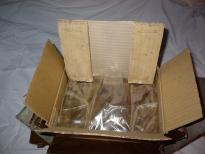
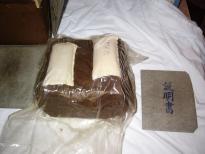
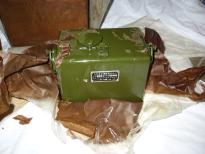
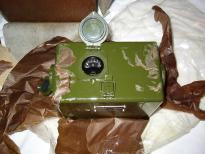
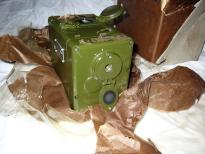
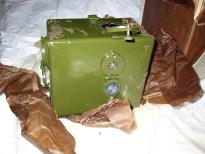
I couldn’t wait to try cranking the generator. It shows a proper reading on its built-in meter.
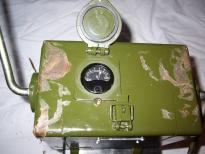
The next box has a paper outer wrapping like the first two, but the inner wrapping appears to be heavily-waxed linen. The inner wrapping is labelled under the wax.
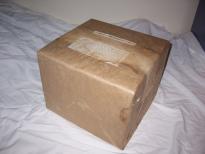
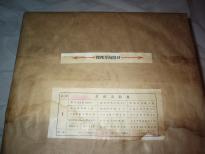
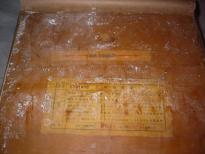
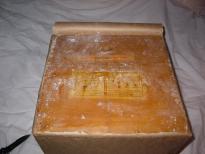

Cutting through the linen wrapping and opening the box reveals a small wooden box, some canvas items, and the radio receiver.
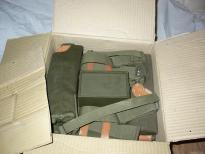
The wooden box has a sliding lid, held in place by a rotating piece of wood. Sliding off the lid reveals spare tubes, bulbs and fuses, protected by felt and shredded paper padding.
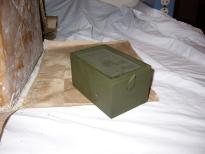
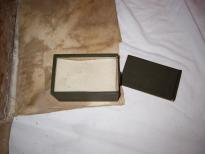
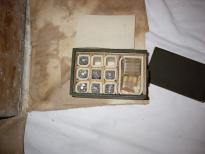
The canvas items are a parts bag and the shoulder straps for the receiver.
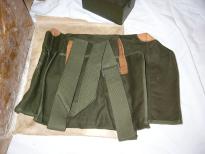
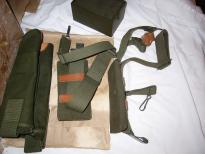
The receiver has a waist pad attached to it and a printed tissue paper seal on the front cover. Although I can’t read the plate on the front cover, some punctuation makes it appear to me that the cover may be on upside-down.

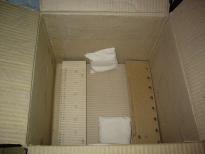
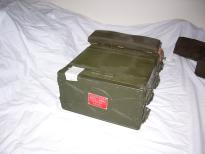
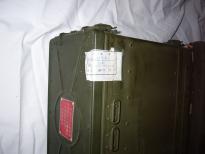
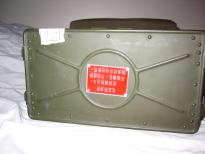
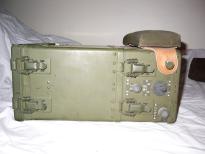
The right side of the battery box has a switch and a couple of connectors.
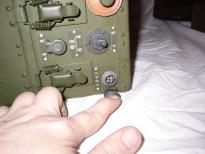
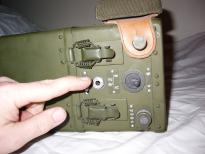
Removal of the front cover exposes the receiver’s controls. It looks like a previous paper seal was broken and then covered with a new seal.
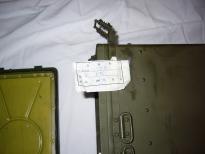
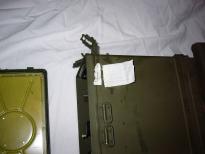
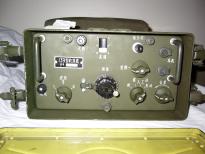
The battery box contains a coil of green wire (probably for use as an antenna?), a cable that appears to be for an external power supply with a connector on one end and tagged wires on the other end, and a pair of headphones.
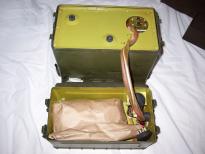
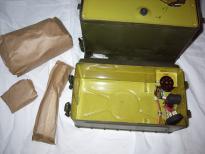
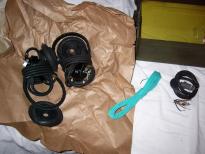
Here’s the interior of the receiver.
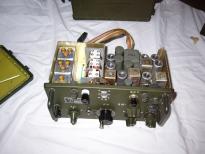
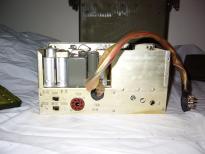
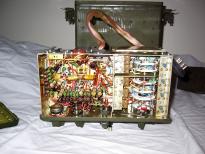
This box contains the generator stand and seat. It wasn’t packed in a separate carton for shipping to me, so there’s a plastic pouch stuck to it for the shipping label.
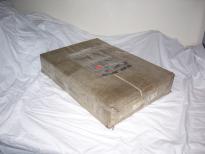
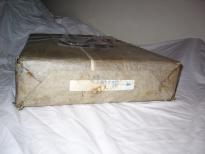
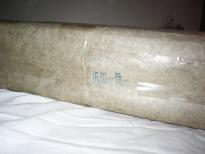
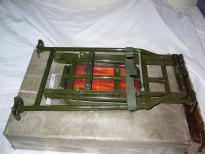
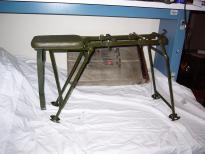
I received some loose manuals and papers with the set.
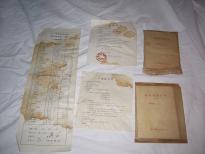
A small box contains wire, solder and tools. The large L-shaped tool is a soldering iron which is heated by placing it in a fire. Judging by the size of the iron and the diameter of the solder, I can’t help but wonder whether they’re intended for repairing the radio set or installing copper rain gutters on the building containing the radio! :-) The soldering iron is almost big enough to use as a hatchet to chop wood for heating it.
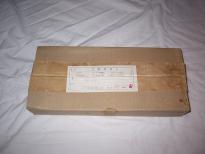
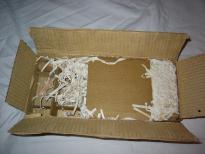
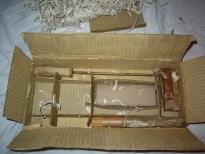
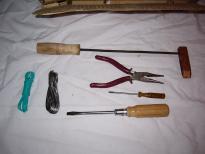
Here’s a neat surprise. Another box contains what appears to be the Chinese equivalent of Simpson multimeter. Amazingly, the batteries (which appear to be a C cell and a small 15V battery) do not show signs of leakage. I’ll leave them in their sealed pouch. This meter looks like generic commercial equipment that was not specifically designed for military use.
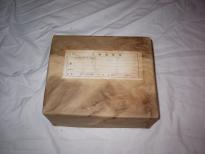
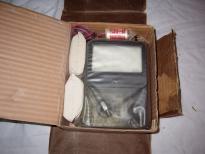
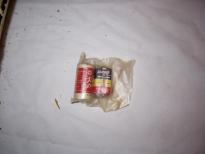
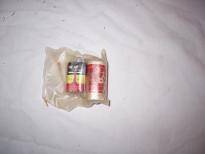
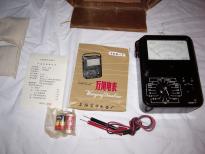
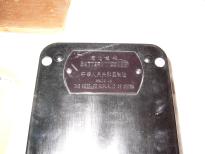
The final box is the largest one. Like the box containing the receiver, this one is wrapped in heavily-waxed linen, and the inner wrap is labelled.
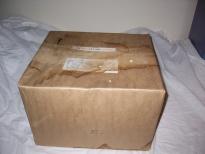
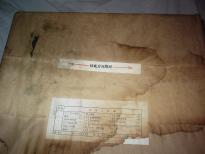
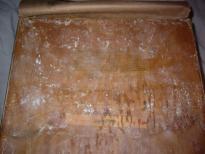
A canvas bag is on top, with the transmitter partially exposed. Removing the bag exposes a canvas roll bag, a waist pad for the transmitter (unlike the one on the receiver, this one is not yet installed), and some items wrapped in paper. Removing the roll bag and one of the wrapped items reveals another paper-wrapped item, a wooden spares box, and a cardboard box.
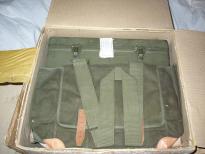
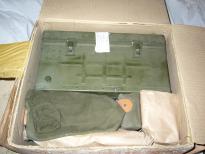
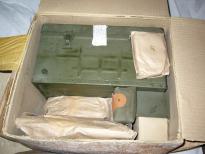
The wrapped item that was on top of the wooden and cardboard boxes turns out to be a microphone with a cast metal casing. The waist pad has an elastic strap with leather ends to attach it to studs on the transmitter. The wooden spares box contains tubes, fuses and bulbs, protected by felt and shredded paper padding.
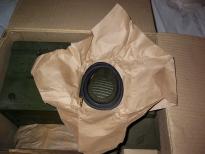
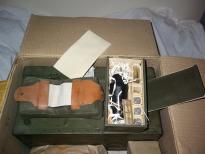
The cardboard box contains a telegraph key with a Navy-style knob. The knob is loose, but it just needs its mounting screw to be tightened. The other Chinese military telegraph keys I’ve handled recently are very well-made. This one is based on the same design and materials, but it’s not made as well. In particular, the axis of the pivot points drilled into the sides of the lever isn’t quite perpendicular to the lever, and the fixed and moving contacts don’t quite line up, even after a bit of adjustment. It’s still servicable, but it doesn’t have quite the same feel as my other Chinese keys.
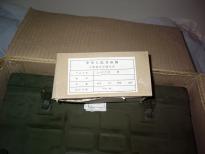
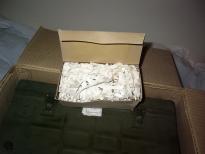
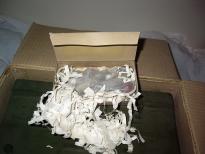
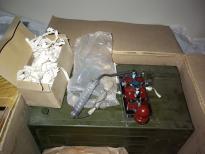
Two more paper bundles contain wire antennas on wood spools. The wires are coated with a heavy layer of talcum powder to preserve the rubber insulation, but it’s still very stiff after being stored for aroun 35 years. I’ll just leave the antennas on their spools, rather than risking cracking the insulation.
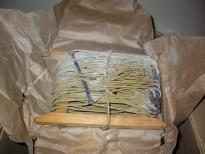
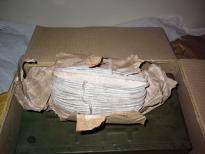
The transmitter also has a printed tissue paper seal on the front cover. This one also shows signs that a previous seal was broken and then covered with a new seal. This front cover appears to be on right-side-up.
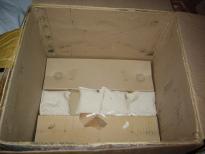
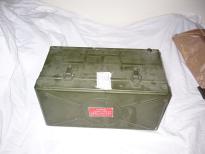
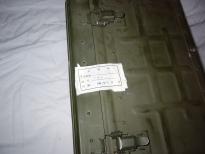
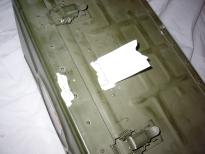
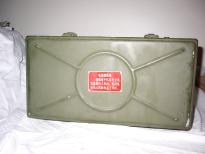
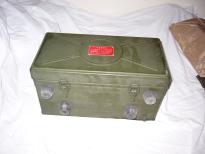
Here’s the front panel of the transmitter. There’s a storage compartment at the lower left, and a gasketed box at the upper right protects a group of six crystal sockets.
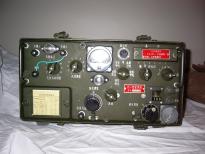
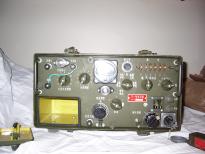
Here’s the interior of the transmitter.
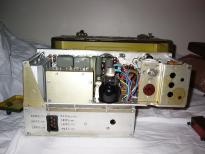
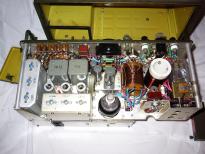
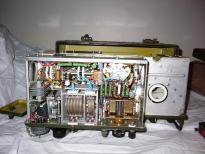
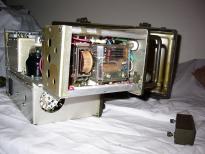
A paper tuning chart on the storage compartment cover has both a pre-printed table and a blank one.
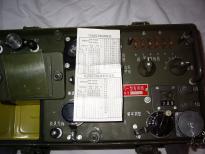











































































































thank you
I suspect that in the Sixties, the Chinese got a hold of American made GRC-9 radios during the early years of American involvement in Vietnam. They must have liked what they saw, and have designed their own version of the GRC-9 as a result. What I found really stunning is that the inside of the 102E literally looks like it is American made, because even the individual components mimic the look of US made components. Truly amazing.